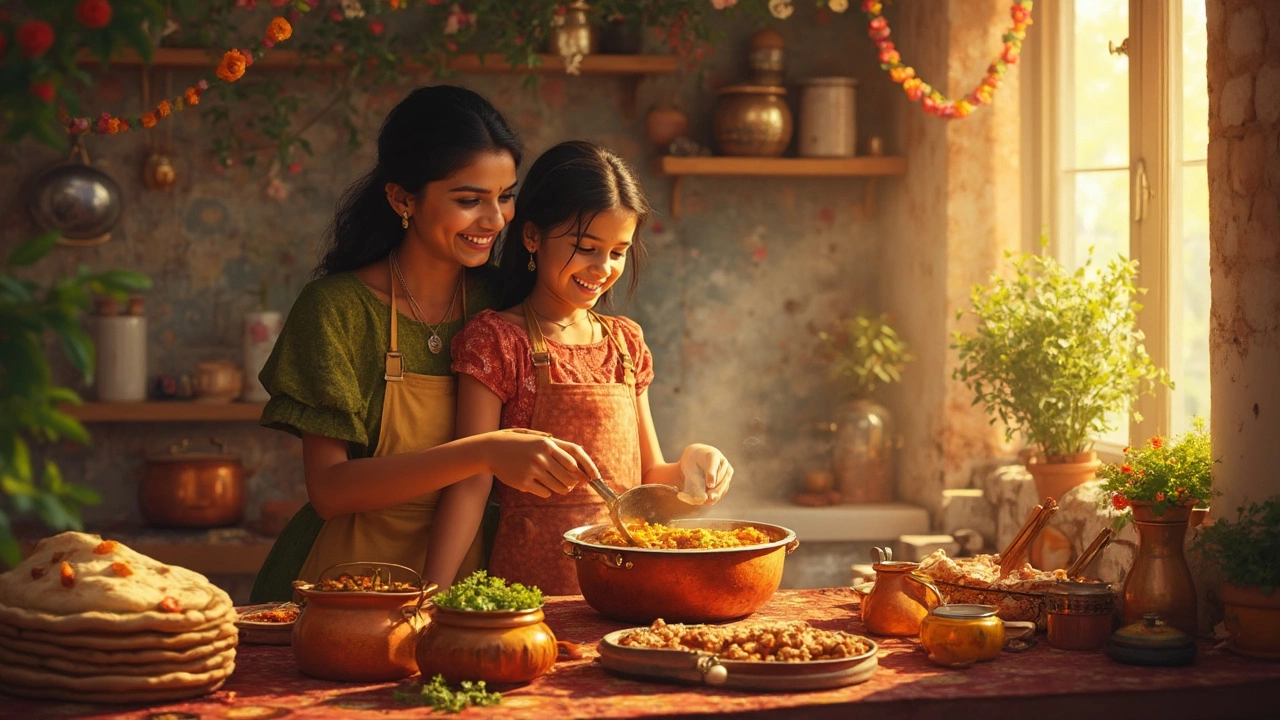Indian Curry: Simple Guides, Flavors & Tips
If you’ve ever wondered why Indian curry feels so comforting, you’re not alone. It’s a mix of spices, fresh herbs, and the right cooking method that creates that deep, layered taste. You don’t need a master chef’s skill set – just a few basics and a willingness to experiment. In this guide we’ll break down the core ideas, give you quick tricks, and point you to easy recipes you can try tonight.
What Makes an Indian Curry?
At its heart, a curry is a sauce that carries flavor into the main ingredients. The sauce usually starts with a tadka – a hot oil or ghee base where whole spices like cumin, mustard seeds, or fenugreek are fried briefly. Once the spices pop, you add onions, ginger, garlic, and tomatoes. This trio creates the sweet‑spicy backbone most Indian curries share. From there, you sprinkle ground spices – turmeric for colour, coriander for earthiness, and chili for heat. Every family has its own spice blend, but the steps stay the same.
Freshness matters. Use fresh ginger and garlic rather than powdered versions and pick ripe tomatoes or a good canned brand if fresh aren’t handy. A splash of water, broth, or coconut milk decides how thick or thin your sauce ends up. Want a richer feel? Add a dollop of cream or a spoonful of cashew paste. Want it lighter? Stick to stock and let the spices do the heavy lifting.
Everyday Curry Tricks for Home Cooks
1. Prep spices ahead: Toast whole spices in a dry pan for a minute, then grind them. This boosts aroma and saves time when you’re ready to cook.
2. Control heat early: Keep the pan medium‑low while frying onions. Slow cooking releases natural sugars and prevents burnt bits that can make the curry bitter.
3. Balance flavors: If it’s too spicy, stir in a spoon of yogurt or a pinch of sugar. If it’s flat, add a squeeze of lemon or a dash of garam masala at the end.
4. Use one‑pot cooking: Add protein (chicken, paneer, lentils) after the sauce forms, then simmer together. This lets everything soak up the spices, reducing extra steps.
5. Finish with fresh herbs: A handful of cilantro or a few mint leaves brightens the dish instantly.
When you’re first trying a curry, start with the classic chicken masala. Sauté onions, ginger, garlic, then add tomato puree, a mix of turmeric, coriander, cumin, and a pinch of chili powder. Add chicken pieces, cover, and let it simmer until tender. Finish with a splash of cream and fresh cilantro. You’ll see how the same spice base works for veg dishes, seafood, or even just veggies.
Remember, Indian curry isn’t a single recipe – it’s a toolbox. Play with the spice ratios, swap coconut milk for yogurt, or replace meat with chickpeas. The more you practice, the more you’ll trust your palate. By the end of the week you’ll have a handful of go‑to curries that feel personal and tasty, without the need for a restaurant.
So grab your spices, fire up a pan, and let the aroma guide you. Indian curry is all about layering flavors, and each layer brings you a step closer to that comforting, home‑cooked feeling. Happy cooking!
Best Indian Curries for Weight Loss: Healthy Choices & Expert Tips
Explore which Indian curries can help with weight loss, get practical tips, ingredient guides, and smart swaps to enjoy Indian food while staying healthy.
Tastiest Indian Curry: How to Pick and Make the Best One
Wondering about the tastiest Indian curry? This article breaks down which curries stand out, what makes them special, and how to pick the best one for your next meal. You'll get easy tips for home cooking, fun facts from curry culture, and a peek at favorites like butter chicken and tikka masala. It's perfect for anyone craving flavor without complicated steps. Get ready to level up your curry night.

